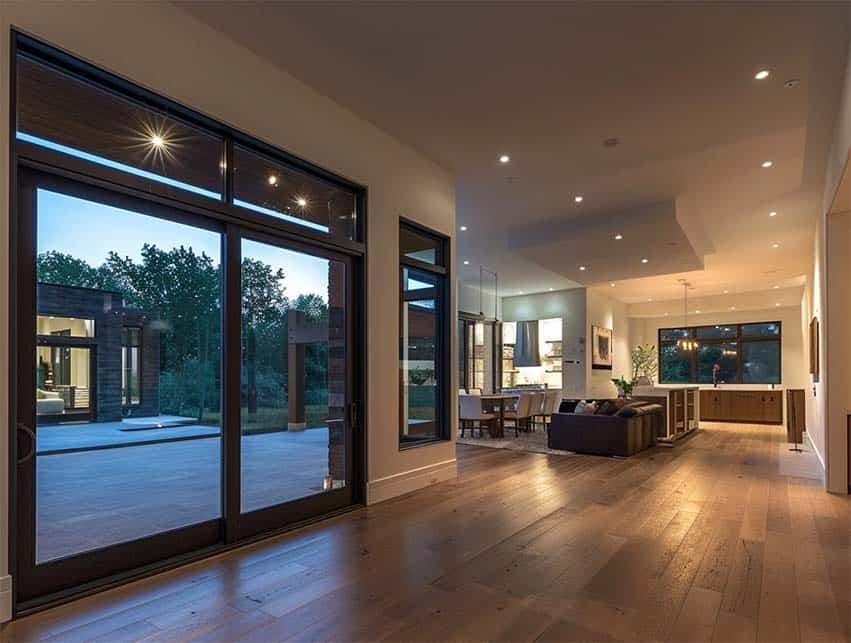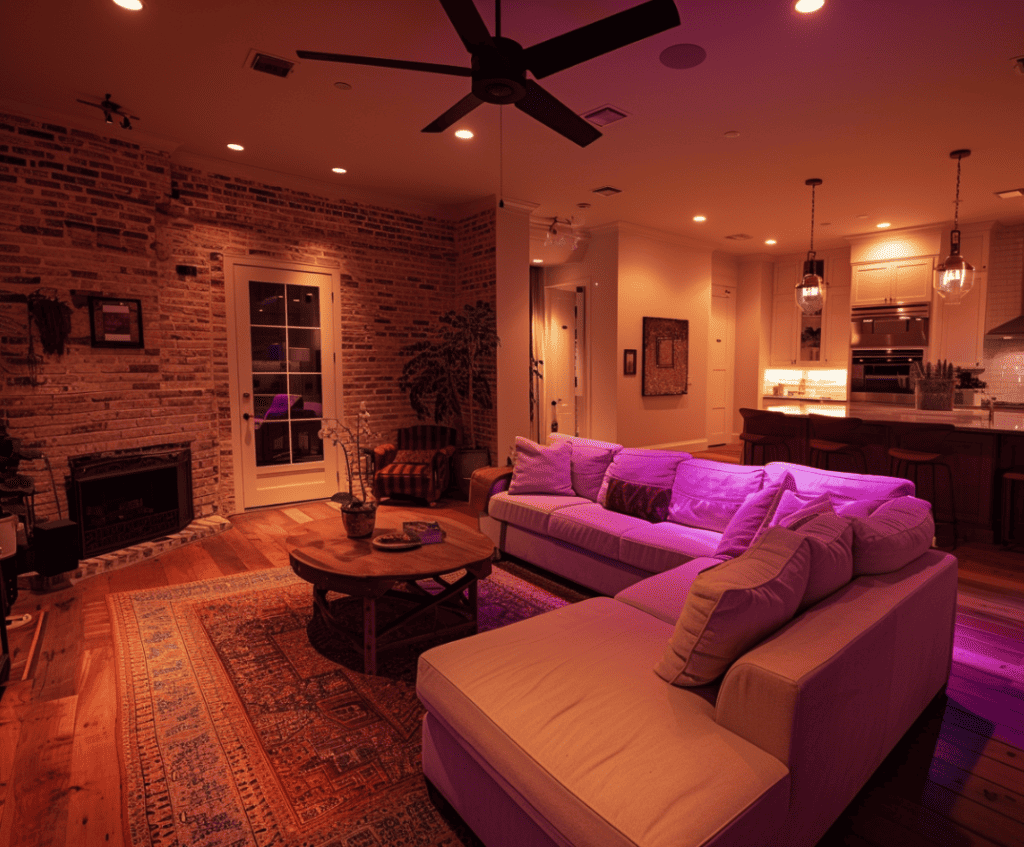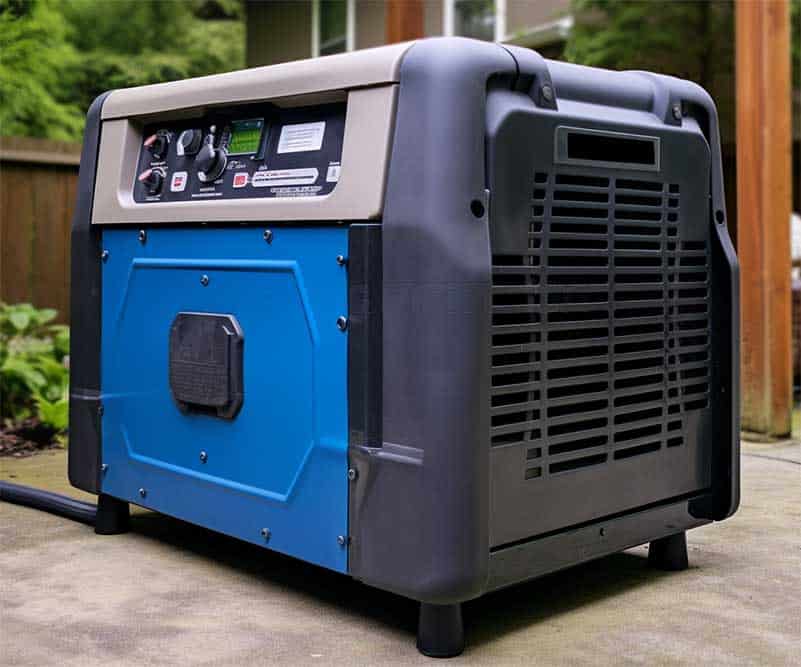Lighting Installations for a Home-Based Lifestyle

Throughout the pandemic and the post-pandemic period, the residential electricians of All Star Electric San Antonio have been assisting numerous customers with optimizing their home lighting installation as part of a massive transition to home-based living.
Switching out of legacy lighting systems into LED lighting installations is a movement, not a fad. It is a real trend, bound to amplify further under the influence of an evolution in tastes, the desire to make our home life more comfortable, and a long-term need to save on energy usage.
In this article, we discuss several aspects of this topic, cover various applications of LED lighting installations indoor and outdoor, and make some practical recommendations.
I. Work-From-Home: A Perennial Lifestyle Change
The pandemic pulled us out of our offices to work and live at home — and apparently, we don’t want to go back to the old days. The 2020 quarantine confined us indoors, forcing us to rethink our lifestyles… and we have been loving it ever since.
This momentous societal change translated into a massive growth of the home improvement industry. In fact, the size of the US home improvement market increased over 22% between 2019 and 2020, and over 39% between 2019 and 2022.
Size of the U.S. home improvement market from 2008 to 2023, projected to 2027

From small-scale DIY projects to partial remodels to complete house makeovers, people have been actively seeking ways to make themselves more comfortable in their working and living pods. This trend is bound to continue in the coming years, with an emphasis on enjoyment, comfort, and saving money.
1. Home Lighting Installation: Function Follows Form
In an article titled “Lighting for the Future Home” published on DesignersToday.com in 2021, Executive Editor Andrea Lillo details how we, as a society, are moving away from decorative lighting fixtures and toward concealed lighting in our homes.
From the echoes we get from our customers in San Antonio, this trend stems from (a) the need to accommodate more people in their home, (b) an evolution in tastes, and (c) new technological innovations enabling them to cater to a wider diversity of indoor activities.
Home Sweet Home

You probably heard about the “Boomerang Generation” phenomenon. With the rise in the cost of living and the decrease in housing affordability, Millennials and Gen Zers have moved back or are staying longer with their parents. How do the Boomers deal with the crowding? According to Lillo, they install moveable partitions to create more rooms or temporary spaces to accommodate their new live-ins.
All these new rooms need lighting devices. The new breed of lights — LED strips, small LED lights, etc. — offer a level of functionality and flexibility unmatched by traditional bulbs. Their form factor doesn’t get in the way of these partitions, and they can match any decor.
Furthermore, their lower heat signature enables electricians to tuck them away safely in tight spaces where incandescent bulbs would create a fire hazard and would be too big to fit. Form, sometimes, commands function.
Evolution in Tastes
Lillo also mentions that new homes tend to dedicate a greater surface area to “private” spaces: home offices, prayer rooms, yoga/exercise spaces, etc. We see here a natural outcome of the new work-from-home normal.
With their capacity for low-intensity luminance, light diffusion, color change, and light directionality, the new LED lighting systems are extremely versatile and well adapted to various types of use and preferences.

LEDs have opened up a range of creative visual possibilities previously unavailable with legacy bulbs. Simply compare how a teenager’s room was lit just a few years ago and what it looks like nowadays. How often did we see bedrooms bathed in pink, blue, red, and orange light back then? Multicolor lighting is commonplace today.
Adapting a Lighting Installation to Physical Limitations
Legacy bulbs only offered limited adaptability to individual physical needs. In a recent past, your choice of kitchen under-cabinet lighting fixtures was limited to cold neon tubes and yellowish 40W light bulbs. Too bad if you were a senior with a bad case of glare sensitivity, or a person in a wheelchair with only a countertop-level field of vision.

By contrast, LED lighting strips emit diffused light, reduce glare, and direct luminance. We can also control their color to create more or less contrast, depending on ambient lighting. Adaptability increases functionality and visual comfort for all ages and medical conditions.
Lighting Systems Saving Energy
Considering the inflation outlook and the rise in energy costs, most of us need to save money everywhere we can. When discussing electrical remodels with local homeowners, we clearly see their need to lower their energy usage.
Just as foam insulation and high-SEER HVAC systems, home lighting systems directly save on electricity. We wrote several articles on the topic, including one with a calculator. It enables you to figure out how much your household would save each year by switching all or part of your lighting systems out of incandescent bulbs into LED lights.

If your home is not yet converted to LEDs, it is time to take a look at the possibilities offered by simple and sophisticated LED lighting installations. We see at least two reasons to consider the change: (a) transforming the look of your interior; (b) lowering your power bill very significantly. If the first reason is not enough to cheer you up every day, the second is sure to please you at least once a month, when you receive your utility invoice.
2. Landscape Lighting Installation: Expanding Home Life Outdoor
As people spend more time homebound and entertain guests more often, landscape lighting is becoming a common sight in patios, gardens, and yards.

Hardscaping with LED Strips
Interior design magazines like Designers Today and Home Accents Today highlight people’s preference for minimalism. They also mention the growing popularity of lighting fixtures that blend inconspicuously in the landscape.
LED strips definitely fulfill this preference. Their form factor and waterproofed construction allows designers and electricians to conceal them in hardscaping features. Stairways, access ramps, walkways, railings, and soffits are prime architectural features to this end.
All Styles Welcome
Homeowners also buy LED string lights, in-ground spotlights and lanterns for their energy efficiency and their aesthetic illumination.
Most LED lights can change color and be controlled by smartphone apps, voice commands, or dedicated remote controls. Some lanterns even have motion sensors that turn them on when a person approaches.
Exciting Future Landscape Lighting Applications
As professional electricians, we see new technology opening possibilities to improve our daily lives. Among the innovations we are hearing about in the LED industry, two promise to bring major changes to our homes.

According to an article published on GVT’s website, one of these R&D avenues is flexible in-molded LED foil. LED circuits can technically be printed on flexible foil. You can see a practical application of this technology in foldable phone screens. We could soon see backwalls and canopies covered with large LED foil, the size of a big backlit TV. That would be a cool way to watch the Superbowl in a backyard party.
Concurrently, Iberdrola reports that there is research going on to develop a replacement for Wi-Fi called “Li-Fi”. Scientists focus on the capability of LEDs to transmit data wirelessly on the light spectrum, at extremely high frequencies. “Li-Fi” would allow data transfers at ridiculous speeds of 10 GB/s to 220 GB/s. This is 700 to 1000x faster than Wi-Fi. Do you want to watch a Hollywood flick on a giant OLED foil screen in your backyard? Li-Fi could transfer the entire movie to your screen in just 1/100 sec.
Mind-boggling…
3. Powering with Solar
Solar power frees homeowners from the grid, and as a result, solar energy is making huge inroads in the U.S. In just 10 years, solar power has gained over 4% of the total residential market. All Star Electric San Antonio installs solar panels in the region. The main reasons why our customers switch to solar are the rising cost of utilities and government incentivization programs.
Market penetration of residential solar in the United States (2012-2022, projected to 2032)
Let’s be clear though: solar is not without its own issues. Here in San Antonio, we get an average of 300 sunny days each year. That’s a lot of sun. Even so, we have to store energy during the rainy days. How much power can we store before we have to revert to the grid?
Saving Energy with LED Lighting Installations
Beyond technological innovation, the most obvious way to limit our calls to the grid is to decrease our energy consumption. We can achieve significant energy savings by switching to LED lighting. By decreasing the power needed to get the same luminance as a bulb, a LED light draws less from the available energy produced in real-time by a solar power system or stored in its batteries.
Outdoors, landscape LED lighting makes it possible to illuminate a backyard or an entire property without quickly reverting to the grid because you tapped out your Tesla power wall.
Outlook for the Outdoor
Battery technology is evolving and solar power systems are becoming more efficient. As innovations come to the market, solar-powered landscape lighting is likely to become a basic feature of our backyards.

Looking at residential real-estate listings in San Antonio today, we don’t see many photos of properties lit up at night. A long-term survey of Realtor.com and the MLS shows that most real-estate photos are taken in bright daylight, or at sunset when indoor lighting flatters the looks of a home. No or almost no nighttime shots.
This will change. We will see more hardscape scenes shot at night, with an LED lighting installation highlighting the most elegant features of a home.
4. Types of Lighting Installations for Various Applications
For your lighting plan to accommodate all of the activities and types of ambiance you want in your home and outdoors, take a look at the three types of lighting: ambient lighting, task lighting, and accent lighting.
Ambient Lighting
Ambient lighting is your main light source, meant to illuminate an entire room or section of a room. In a kitchen, LED light strips associated with ceiling LED lights (flush or recessed) could play this role. In your living room, this is also going to be your ceiling LED lights (flush or recessed). Any light fixture capable of lighting a whole room ━ or the main area of the room ━ would qualify as an ambient light source.
Task Lighting
Task lighting fixtures are your smaller lights that illuminate the smaller space where you perform a certain task. Perhaps you have a lamp next to your bed that allows just enough light for you to read before going to sleep.
You may have make-up lights above the mirrors in your bathroom, separate from the main source of light. A lamp on your desk just lighting up the desktop, your computer keyboard, and some paperwork nearby. These are task lights.
The purpose of task lighting is to make it easier to perform a task, and create a more intimate lighting to avoid bothering other people for instance.
Accent Lighting
Accent lighting fixtures can be even smaller than those used for task lighting. People use accent lighting fixtures to highlight a painting on a wall, or to showcase a sink as a focal point in the kitchen. Accent lighting is a way to underscore design features in your home.
A strong lighting plan integrates functionality and aesthetics to fulfill all the purposes your house serves and give it the look and feel you desire. A residential electrician will calculate the total electric load of your lighting plan and figure out what fixtures to use where, with the purpose of decreasing this load and saving you money.
II. Home Lighting Installation: Some Suggestions
1. Kitchen Lighting
We typically recommend our clients to install an array of LED ceiling lights. If they don’t already have recessed cans, we use flush-mount lights to simplify installation. This array of lights will create a layer of ambient light for when the family gathers in the kitchen and when they receive guests.

For your cooking activities, we suggest pendant lights over your preparation island or your sink countertop. You can also install these lights over a breakfast counter or nook. These are task lights: they help you accomplish your food prepping and cooking, and to eat quick meals.
Installing LED light strips under your cabinets or inside glass-door cabinets will help accent the general design of your kitchen. From a practical standpoint, they will softly illuminate your kitchen at night and a task area.
Choose LED strips that can change color. Bright white light is typically best for preparing food. But dimming it in the evening to a warmer yellow would create the mood for dinner. After hours, during the night, switching these LED light strips to a colder blue would enable everyone to go about in the darkness without bumping into things or straining their eyes.
2. Yoga/Meditation/Prayer Room Lighting
This type of activity definitely calls for ambient and task lighting. For ambient, LED light strips along the ceiling ━ hidden, if you have cove/tray ceilings ━ will create a soft, indirect light. Color-changing strips will adapt the light to the mood of your work: stimulating or calming?
In prayer rooms, you probably have lists to go through and scriptures to read. You want a task light for this. A dimmable floor lamp with a directional head will give you the focus light you need.
3. Hallway Lighting
You can either use LED recessed or flush lights, or install wall-mounted sconces, depending on the lighting effect you plan to achieve: broad illumination with overhead lights? Or contrasting brighter and darker areas?

Remember that LED lights are directional, unlike bulbs. You will need to calculate how far from each other these lights should be installed. As professional electricians, we do these calculations when we propose a lighting plan to our customers.
If you have artwork on your walls, small overhead picture lights will highlight it. Even more sophisticated, edge-lit LED panels mounted over the pictures: they will highlight them and reduce glare on the surface.
4. Bedroom Lighting
There are no rules to illuminate a bedroom, just possibilities depending on practicalities and your wish list.

Most of our clients in San Antonio want bright overhead lighting to go about general activities like dressing up, making the bed, vacuuming and cleaning up. Use recessed or flush-mounted LEDs for this type of lighting.
If you typically fall asleep as your head hits the pillow, think of remote-controlled ceiling lights.
Concealing light strips in a tray ceiling will create a soft, diffused light that sets the mood right.
We love bedside lamps. Instead of bulbs which create a 360° illumination, use directional LED lamps ━ with or without an adjustable neck ━ if you enjoy reading or journaling before falling asleep. These are good task lights that limit light bleed and avoid bothering your significant other when they want to sleep.
A task lights and a beauty dish are of course first necessities if you have a vanity or dressing table.
Teenagers love to install color-changing LED strip lights in various areas of their bedroom: behind the headboard, lined along the walls, hidden above bookshelves or crown molding. If you parent teenagers, let them show you a few TikTok videos: you’ll get an idea of what’s in.

III. Some Technical Guidelines for LED Lighting
Color-Rendering Quality
LEDs do not work on the same principles as light bulbs, and they do not show colors in the same way. When choosing your lights, opt for products with a high CRI (Color Rendering Index): the higher their CRI, the more faithfully your LEDs will render colors.
The reason why LEDs may give a “clinical” look to a room is because of a low CRI (80 or so). A CRI 97 will show colors very closely to how they would appear in the sunlight. Where do you find the CRI? On the product box.
Directionality
LEDs don’t generate 360° light. They emit light more like a beam. The downside of this characteristic is that if you space them out too much, you will wind up with an alternance of well-lit and darker areas. Patchy, uneven lighting.
This is a problem that a professional electrician will help you avoid by calculating the right distance between LED fixtures in the space where they are installed.
Voltage Supply
LEDs work on low-voltage DC. Your mains is 110-120V AC. All off-the-shelf LED fixtures integrate a “LED driver” that transforms the mains current into direct current at the right voltage for the type of LEDs used in the fixture.

However, this is typically not the case when you buy LED strip lights by the yard. You have to calculate the power supply provided by the driver according to the number and type of LEDs to be powered along the length of all interconnected strips. If your calculation is wrong, your LED will either be underpowered (and light intensity will drop toward the end of the strip) or overpowered (and the lifespan of your LEDs will be shorter than intended).
Consult a licensed electrician to do these calculations, help you pick the right driver, and work out the installation for you.
Overheating

Unlike incandescent bulbs, LEDs don’t produce light by heating up a tungsten filament. Their working principle (electroluminescence) lowers their heat signature. Their electronics do generate heat however. You can see this in car LED headlights for instance: they come with a small fan at the base, which dissipates the heat produced within the bucket before it burns the LED itself.
When installing LED lights on a ceiling, professional electricians will ensure your fixtures have sufficient room around them for that heat to dissipate. They will only use IC-rated fixtures to mount on a ceiling, in order to avoid creating a fire hazard and shortening the life of your LEDs through overheating.
As licensed residential electricians, All Star Electric San Antonio will of course recommend that you trust a professional to install your lighting system. We respect people’s drive to DIY their installation. However, we have seen enough problems in enough homes around the city to know this: even with the best intentions, amateurs will put their family at risk with DIY lighting installations.
Flickering
You probably heard (or seen) that LEDs can flicker. This is a pesky problem that has at least one of several possible causes. Here is a list:
- Wrong dimmer: Not all dimmers are compatible with LEDs
- Bad quality: Cheap LEDs are made cheap, with low-quality drivers
- Short wiring: The wiring inside your light fixture may be shorter than 6” and get loose
- Circuit overload: LEDs sharing a circuit with incandescent bulbs may be underpowered
- Overheating: The electronics at the base of the LED are affected
- Voltage fluctuations: Your mains isn’t stable, you need a regulator or a stabilizer
- Service panel damage: Is there a bad breaker on the circuit?
Flickering within a certain frequency range (3-30 flashes per second) is known to cause seizures. It’s not a problem to ignore: call a professional electrician to trace the cause of the issue. Worst-case scenario: you will be out of a few bucks for a much better quality of life.
Power Usage Savings
We all know that LED lights consume less power than incandescent bulbs, halogen lights and even fluorescent tubes. However, flawed planning when designing a LED lighting system will not just result in spotty lighting and poor light quality. This will also reduce the amount of savings you could derive from a switch to LED.
Earlier on, we mentioned the issue of distance between LED fixtures on a ceiling (what professionals call the “spacing criterion”). You also need to calculate the number of LEDs needed to achieve the illumination you want for a given space.
This will directly impact the power savings your delamping project can achieve.

Quality Matters
Finally, there are manufacturing quality issues at play when selecting LED lights. It sounds like a cliche, but not all LED lights are created equal. LEDs are more expensive than traditional bulbs. They cost much less over time but are more money at the time of purchase. You want the product to last a long time as it will take some time to offset the purchase cost.
Consult with a professional residential electrician before you switch your home lighting system to LED. This will help setting the right expectations and making more informed decisions in terms of product quality and installation requirements.
Trust a licensed electrician to perform the transition of your installation to LED lighting. This will ensure you get all the benefits expected from the move:
- a more beautiful and comfortable home,
- the right lighting for every space and person in your home, and
- significantly lower power bills.
All Star Electric San Antonio: Your Residential Electrician of Choice?

All Star Electric San Antonio has been operating in the city for almost 30 years. We are licensed electricians, fully insured, with a lot of knowledge to bring to your table. Our A+ rating at the BBB San Antonio and our 4.5-star rating in Google tell the story.
We also offer a 2-year warranty on our labor, one of the longest warranties in the industry in San Antonio. When we do an electrical installation, we do it right, on time, and on budget. Call us at (210) 391-0274 for advice. We will be glad to share some advice and discuss your project with you.
Additional Resources
Read our article about Delamping
More information about Lighting Installations




























